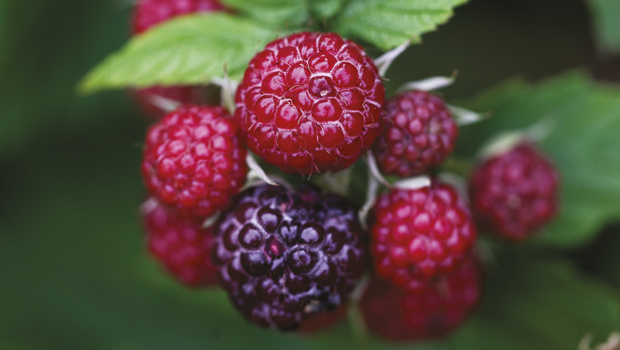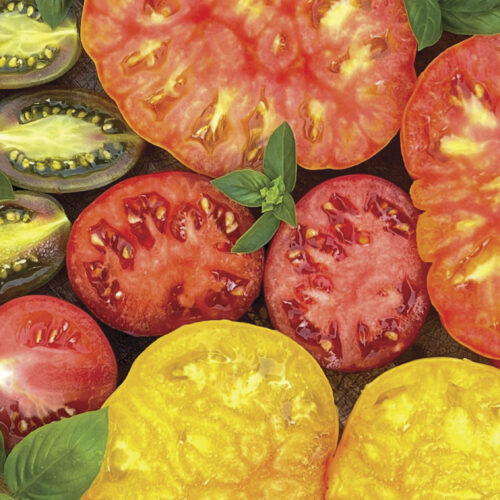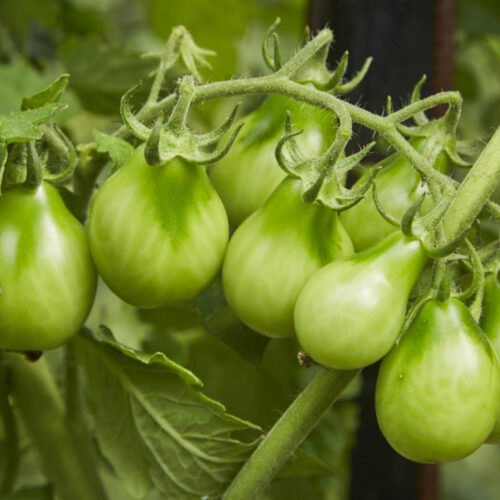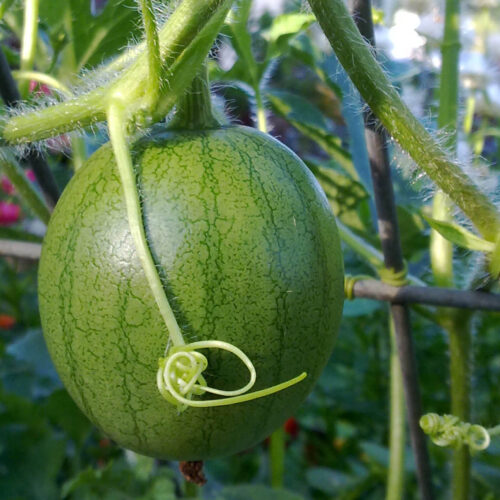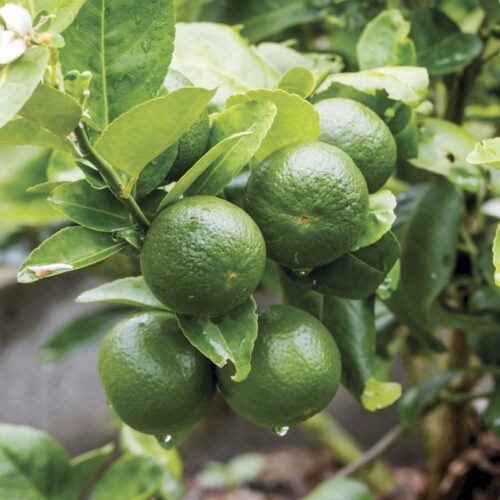Growing raspberries and brambleberries in your own backyard
2013-11-02T08:50:17+11:00
Want to grow your own fruit but can’t stand years of waiting? PAUL HEALY writes that with the Rubus genus – which includes brambleberries and raspberries – your first homegrown bite will not be far away.
With most varieties of tree crop it will be three to five years after planting before you taste your first fruit. It’s a big investment in time and energy that may be without rewards if a growing family, career, or travel lead to a house move.
If you know you won’t be spending years on your block, or you don’t have much space, there are many varieties of Rubus fruits that will produce a luscious harvest within 15 months of planting.
The Rubus genus contains plants that produce fruits on canes that grow from the crown of the plant, and so are often collectively called ‘cane fruits’. Within the genus are the brambleberry group – loganberry, youngberry, boysenberry, silvanberry (also referred to as American brambleberry) and keriberry – and thornless blackberry cultivars.
The raspberry is often included as a brambleberry but it is not one. Its significant difference is revealed by picking. The raspberry fruit core stays on the plant, whereas with brambleberries the core remains in the fruit.
Brambleberries and raspberries will give an impressive yield of early summer (and in some cases autumn) fruit from a relatively small space, and once established, are reasonably easy to manage.
One of the best features of Rubus fruits is their moderate height when trellis-grown, making them easy to net and a good alternative for gardeners with possum and bird problems in their taller fruit trees.
Climate
Raspberries are better suited to higher altitudes and cooler parts of south-east Australia.
Youngberries, loganberries and boysenberries will grow successfully in hotter parts of the country if they are managed for late spring and early summer fruiting. Try to find a garden space protected from hot winds and afternoon sun to the north and west, while open to the north-east.
Water
Water is the essential factor with berry fruits. Without a steady daily supply of moisture, the fruit will not develop any size or flavour. You can forget Rubus entirely if you are perpetually short of water from October onwards.
Where there is a good water supply, the tougher cultivars of Rubus will grow superbly in a hot, dry inland climate for there is little risk of moulds and fungal infections – a seasonal problem in high summer rainfall areas.
In subtropical parts of NSW and Queensland, where milder winters don’t provide sufficient chill for the older varieties, a type of brambleberry – the keriberry – has been developed by New Zealand breeders. It is actually a Chilean subtropical blackberry species that requires less chilling, and can be grown north of Auckland, which has a similar climate to Sydney.
Soil
Rubus fruits need a moderately fertile, well-dug, well-mulched, slightly acid soil, with plenty of moisture throughout the growing season.
Most of the commercial Rubus varieties come from Europe and North America. However, some notable examples, such as the silvanberry and some raspberry varieties, have been developed in Australia.
In their native ranges, Rubus are usually found in small glades and clearings of deciduous forest where they thrive in a thick leaf-mould mulch – perfect plant food for this genus.
While Rubus cane fruits will always do best in heavier, acidic, clay-based loam soils, they can be grown on acid sand as long as a thick mulch of compost and straw is backed up by seasonal treatments of liquid clay. This is made by stirring crumbled, non-saline, red clay into a warm container of water. Pour the liquid clay onto the soil all around the root zone of each cane cluster every month through the winter and spring.
Potassium must also be supplied every winter for most sandy soils in the form of sulphate of potash or poultry litter, as heavy flower and berry crops will soon deplete available potash. Do not supply potash in the form of wood ash as this will make the soil too alkaline – pH for Rubus fruits should be between 6.3 and 6.8.
Training
Spring- and summer-fruiting raspberries can be grown in small, self-supporting clusters, but while it requires little care or management, this method has been found to be relatively low yielding.
For high fruit production, domestic raspberry and other brambleberry crops are best grown on trellises, or wires held between strainer posts and supported by steel star pickets at four-metre intervals.
The trellis should have two wires, one at waist height and the other at shoulder height.
Taller, mature canes are tied to the top wire while shorter, new canes are tied to the bottom. Once the mature canes have fruited they will not fruit again, so they should be cut to ground level as soon as possible after harvest. This directs energy into growing new fruiting canes.
Then untie your new canes from the bottom wire, lift them up to the second wire and retie them. As the next canes emerge, tie them to the now vacant lower wire. And so on.
Each year, you will always have older fruiting canes and new-growth, non-fruiting canes. This two-wire method of training is the ideal support system for all brambleberries.
The modern practice for raspberries is to duplicate this format so that canes are held in position between pairs of wires at each level – no tying needed. Raspberries can also be grown in clusters of five canes around 1.8-metre posts – a traditional, no-fuss method for home gardeners with limited space.
While a freestanding trellis gives the easiest access for training, weeding, pruning and harvesting, a simple two-wire trellis tied to outriggers attached to a boundary fence will also work.
Some raspberry and brambleberry cultivars produce a lighter autumn crop as well. With these, canes that have completed fruiting should be pruned before the autumn crop.
Raspberries
Raspberries are the queen of the Rubus fruits and are well suited to the Southern Highlands and eastern slopes of the Great Divide, as well as Tasmanian gardens. If your garden is warm enough for tomatoes, but just a little too cold for capsicums and chillies to fruit out in the open, take heart – raspberries should thrive. What raspberries really don’t like is hot, dry inland climates, or mild winters and warm, humid summers.
Traditionally, the older cultivars of raspberry, if picked when ripe, had to be eaten within 24 hours. Most cultivars grown since the 1970s are firmer and less fragile and can be stored in your fridge for up to a week. The length of storage really depends on the cultivar, the ripeness point of the fruit when picked, and the post-harvest storage temperature. The berries can also be frozen.
Of course, nothing beats the taste of a berry picked and eaten straight from the bush. Raspberries are probably the most fiddly and slowest of the berry crops to harvest, but the taste is worth the extra effort.
Raspberry cultivars usually produce red fruit but some produce yellow, purple or black fruit. Spring- and summer-fruiting raspberries grow on semi-upright annual canes. They should be planted between May and early July, but can be planted as late as early September in cool regions.
Plant your raspberries 30cm or more apart along the trellis. The more room, the easier it will be to keep them free of competing weeds.
After planting, cut all canes back to ground level. In the first summer after planting, four or five canes will grow stronger than the others in their cluster. In the second winter, prune the weaker canes to the ground and allow the stronger ones to mature and fruit the following spring.
Loganberries
Loganberries are similar to raspberries in shape and colour but are slightly larger, more acidic, and the more elongated core remains in the fruit when picked. While raspberries grow on an upright prickly stem, loganberries usually fruit on more vigorous, thorny, rambling canes. However, thornless cultivars are available.
Loganberries are more suited to areas with a warmer spring and summer. Plant them 30cm apart with 1.5m between rows.
Youngberries, boysenberries and marionberries
These sumptuous brambleberries have dark, plumpish fruit whose vigorous, very thorny canes betray their blackberry ancestry.
To gain vigorous growth and good fruit, apply plenty of mulch and water. In very fertile clay soils, these large-fruited brambleberries can be tip-pruned through the summer to reduce the length of the new season’s canes. Trellises or wires should be two metres high. Three wires are needed – the two bottom wires spaced at 50cm and 1m to hold the fast-growing new-season canes well away from the current fruiting growth. Plant 1-2m apart, with 2m between each row.
Pests and diseases
Rubus fruits are susceptible to a number of diseases, such as raspberry root rot (caused by a specific form of Phytophthora fungus) and blackberry rust. Raspberries also may contract a range of viruses, usually introduced and spread by aphids.
Though only a few viral diseases are present in Australia, eradication of viruses and Phytophthora is next to impossible once they take hold. However, gardeners may never encounter them. Some basic preventative measures will help ensure this:
- Purchase certified disease-free plants.
- Provide excellent drainage.
- Provide your berries with lots of leaf mould and potash (or poultry litter) beneath light, leafy mulches including straw, hay, lucerne or sugarcane mulch. Do not use woodchip mulch.
If growing blackberries in areas known to be affected by blackberry rust, plant disease-resistant stock. You can check by contacting your local Department of Primary Industries.
Goats and sheep will eat the whole brambleberry plant, while possums and blackbirds love the fruit. Possums particularly love youngberry shoots, while wallabies get stuck into raspberry leaves. Appropriate fencing and netting needs to be installed if any of these animals are nearby. On the positive side, raspberry and brambleberry leaves are an excellent tonic for goats, sheep, cattle, horses (and wallabies). Pigs will grub out unwanted patches of overgrown brambles if given the chance.
Conserving
While they are delicious when eaten straight off the plant and are an important source of vitamins A and C in the early summer diet, the berry fruits are also ideal for freezing and bottling and for thickening jams thanks to their high pectin content. What’s more, there is nothing lovelier on God’s earth than a spread of your own homemade raspberry jam on wholemeal scones with lashings of cream.

